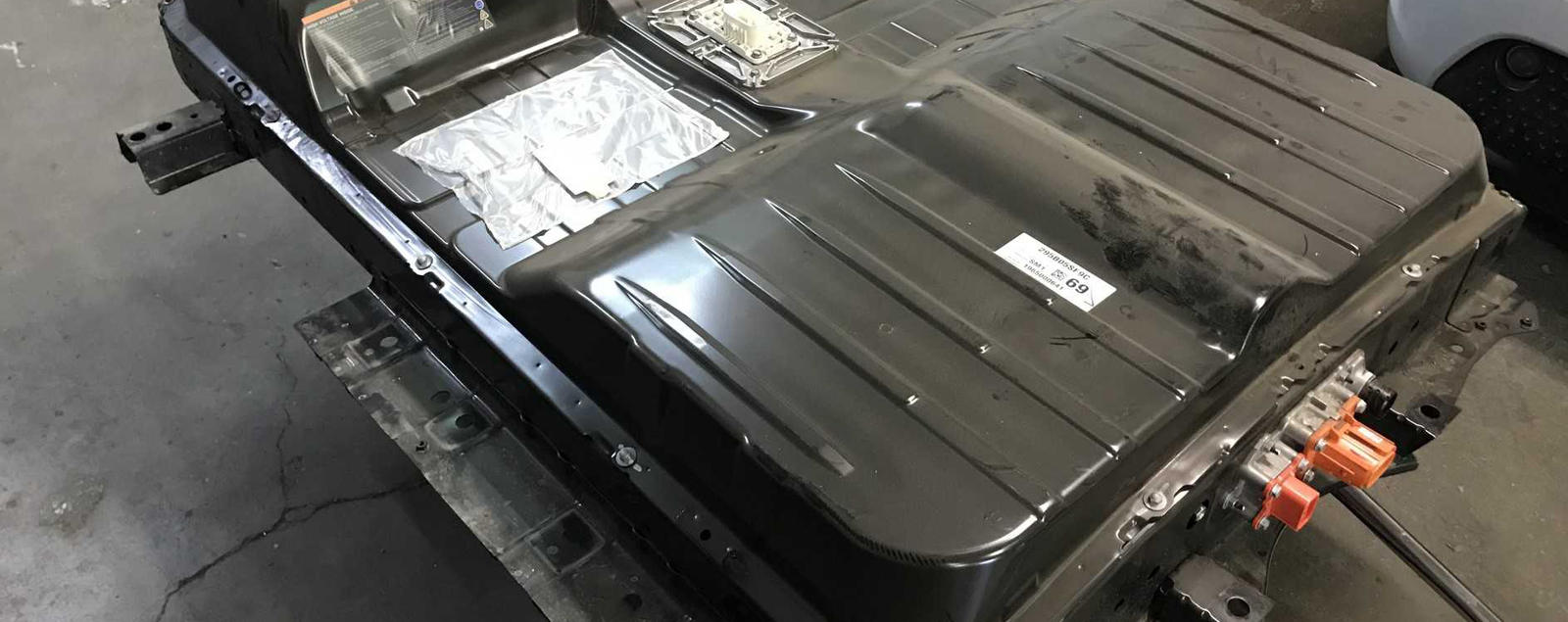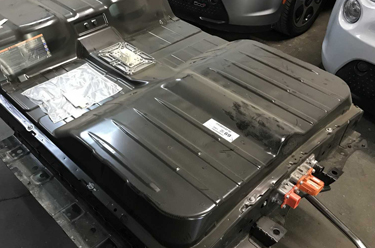

Can hybrid and electric vehicles be dangerous to work on? Absolutely. However, if you get proper training and follow OEM repair procedures, you can safely and efficiently service and repair them.
In this article, we will cover manufacturer-specific safety guidelines aimed at keeping you safe while working on two fully-electric vehicles – The Nissan Leaf and the Chevy Bolt.
NISSAN LEAF
The Nissan Leaf debuted in 2010. By December 2020, its global sales totaled 500,000 – 151,471 units were sold in the U.S. alone. So, there is a very good chance you’ll see one of these vehicles roll into your service drive.
Before you perform any inspections or maintenance on the Leaf’s high voltage system harnesses and related parts, it’s important to disconnect the high voltage system. Here are the important guidelines on how to do that safely.
How to Safely Disconnect and Connect the High Voltage System
Disconnecting High Voltage
WARNING: Touching high voltage components without using the appropriate protective equipment will cause electrocution.
- Turn power switch OFF. IMPORTANT: The technician must keep the Intelligent Key on his/her person.
- Disconnect 12V battery negative terminal.
- Remove service plug, following this three-step procedure.
Step 1. Insert a suitable tool under the RH rear corner of the access trim cover (1) and pry up (2) to remove (see image below).

Step 2. Remove the access cover bolts (1) and remove the cover (2) (see image below).

Step 3. Remove the service plug (see image below).

WARNING:
- Immediately insulate removed high voltage connectors and terminals with insulating tape.
- Be sure to put the removed service plug in your pocket and carry it with you so that another person does not accidentally connect it while work is in progress.
- Wait for a minimum of approximately 10 minutes after the service plug is removed to begin work.
Connecting High Voltage
- Check that 12V battery negative terminal is disconnected.
- Install service plug as per the following steps shown in the image below.

- Connect 12V battery negative terminal.
Additional Safety Precautions from Nissan
Here are a few more of Nissan’s recommendations to keep you safe when working on the Nissan Leaf.
Important to Check Before Starting All Maintenance Work
The Leaf’s high voltage system may start automatically. It is extremely important to check that the charge cable, including the Electric Vehicle Supply Equipment (EVSE), is not connected to the charge port before starting maintenance work.
SPECIAL NOTE: If the timer air conditioner or timer charge is set when the EVSE is connected, the high voltage system starts automatically even when the power switch is in OFF state.
General High Voltage Safety Tips
- Be sure to install the high voltage harness clips to the original positions to prevent damage to the high voltage harness. If the clips are damaged, replace them with new ones before installing the high voltage harness.
- To prevent damage to parts, never allow coolant to splash on the high voltage harness connector. If coolant splashes on the high voltage harness connector, immediately remove moisture from the high voltage harness connector by using an air blowgun.
- Never bring the vehicle into the READY status with the service plug removed unless otherwise instructed in the service manual. A malfunction may occur if this is not observed.
Warning for Technicians (or anyone) Wearing Medical Electronics
WARNING: The vehicle contains parts that contain powerful magnets. If a person who is wearing a heart pacemaker or other medical device is close to these parts, the medical device may be affected by the magnets. Such persons must not perform work on the vehicle.
CHEVY BOLT
First introduced in 2016, the Chevy Bolt was intended to be General Motors' first stab at a mass-market, purely battery-electric vehicle with an affordable price tag. Chevrolet claims the 2021 model will go an estimated 259 miles on a charge. Will one of these have enough juice to make to your shop for service? It’s likely. Before you work on one these, please review and follow these 10 recommended safety precautions from Chevrolet.
Safety Guidelines When Performing Service or Inspections
Danger: High voltage circuits should only be tested using a digital multimeter (DMM) and test leads with at least a CAT III rating, such as the J 39200-A Digital Multimeter. Failure to follow the procedures may result in serious injury or death.
Danger: This vehicle is equipped with a high voltage battery that is completely isolated from the chassis ground. Never utilize AC-powered test equipment to probe the high voltage system. Serious injury, death and component damage could occur if the high voltage system is grounded through the electric utility.
WARNING: Failure to follow the procedure exactly as written may result in serious injury or death.
- Always verify that the high voltage has been disabled before working on or around high voltage components, wires, cables, or harnesses.
- Remove all metal objects such as rings and watches.
- Place safety cones around the vehicle to alert other technicians that you are working on the high voltage system.
- Remove all keyless entry transmitters and the manual service disconnect from the vehicle and secure in a place outside the vehicle.
- Always wear certified and tested high voltage insulation gloves when inspecting or testing any high voltage wires and components.
- Use the "One Hand" rule whenever possible:
- Work with only one hand.
- Keep the other hand behind your back.
- DO NOT carry any metal objects such as a mechanical pencil or a measuring tape that could fall and cause a short circuit.
- After removing ring-terminal style high voltage wires, protect and insulate the terminal ends immediately with the EL-50209 - high voltage terminal cover and UL® Listed or equivalent insulation tape rated at a minimum of 600 V.
- Always tighten the high voltage terminal fasteners to the specified torque. Insufficient or excessive torque will cause malfunctions or damage.
- After finishing work on the high voltage systems and before reinstalling the high voltage manual disconnect, inspect for the following:
- Verify high voltage system integrity and that all connectors are installed.
- Verify that all tools or loose components have been removed.
I.D. Labels for Components, Wire Harness, and Connectors
The wire harnesses and cables for high voltage circuits are encased in an orange-colored covering. In addition, high voltage components such as the Energy Storage System and high voltage cables are affixed with "High Voltage" red danger and orange warning labels.
Be Safe! Look for more hybrid and electric vehicle tips from ALLDATA in the future.
Look at our entire suite of products to determine your shop’s needs.
If you would like to read more articles like this one please subscribe to ALLDATA News.
About the author
Rich Diegle, Supervisor of the ALLDATA Tech-Assist Team, has 35 years of experience as a master automotive technician, marketing and public relations manager, senior automotive editor, and instructor.





